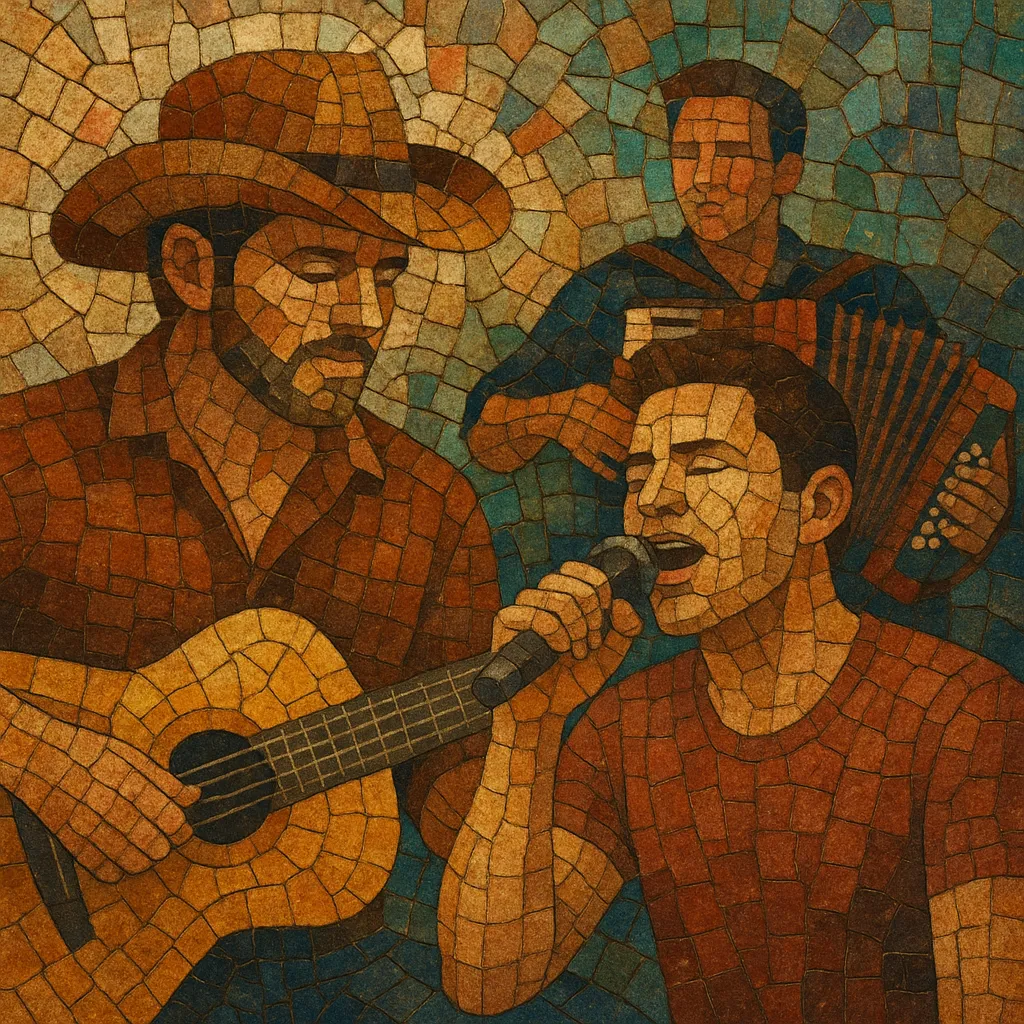Sertanejo universitário is a contemporary, pop-leaning evolution of Brazil’s traditional sertanejo that emerged from college party circuits in the mid-2000s. It pairs the genre’s rural storytelling and acoustic roots with glossy, radio-friendly production and catchy pop hooks.
Typical arrangements feature acoustic and electric guitars, bass, drums, keyboards/synth pads, and often accordion, with memorable sing‑along choruses and verse–pre‑chorus–chorus structures. Lyrically, themes revolve around love, heartbreak, nightlife, friendship, and youthful social life, reflecting a bridge between rural imagery and urban party culture.
The style favors straightforward 4/4 grooves, from romantic mid‑tempos to dance‑floor anthems, and borrows harmonic language and production sheen from international pop and country pop. Its dominance on Brazilian charts in the 2010s made it one of the country’s most influential mainstream sounds.
Sertanejo universitário was born on Brazilian college campuses and party circuits in the mid-2000s, particularly in the Central-West and Southeast regions (e.g., Goiás and São Paulo). Young performers modernized sertanejo’s duo tradition with concise pop songwriting, lighter themes, and polished live shows tailored to university audiences.
Groups and duos such as João Bosco & Vinícius and Jorge & Mateus helped codify the sound: acoustic guitar foundations, emotive melodies, and contemporary pop arrangements. The scene leveraged college festivals, bars, and regional radio, quickly gaining national momentum as labels recognized its crossover potential.
During the 2010s, sertanejo universitário became Brazil’s prevailing mainstream sound. Artists like Luan Santana, Gusttavo Lima, Henrique & Juliano, and Fernando & Sorocaba headlined arenas and major TV programs. The genre diversified into romantic ballads, up‑tempo party tracks, and collaborations with other Brazilian styles (e.g., arrocha and forró). High‑definition live DVDs and streaming platforms amplified national reach.
As streaming reshaped listening habits, sertanejo universitário adapted with viral hooks, collaborative singles, and EDM‑tinged or urban‑leaning productions. It also spawned hybrids such as funknejo and later influenced trap‑inflected directions like agronejo, extending sertanejo’s presence across Brazil’s pop ecosystem while retaining its core identity: melodic storytelling aimed at mass sing‑along appeal.


